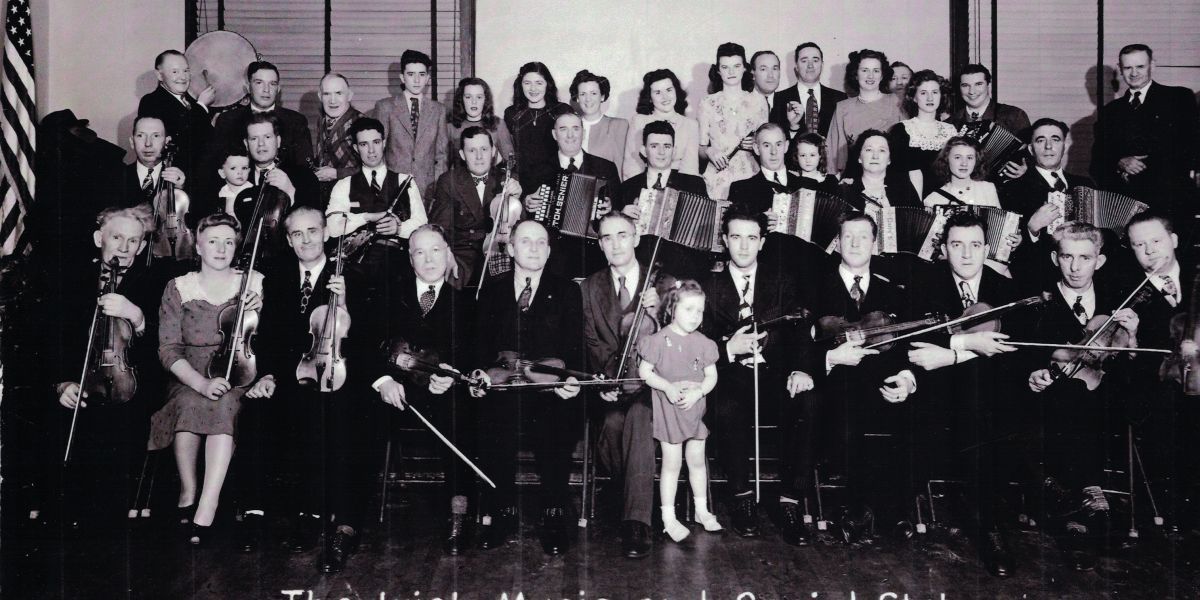

There is a long history of Irish musicians’ clubs in New York, going back at least as far as the early 1920s Irish Music Clubs that met at Farrell’s Hall at 110th Street and Third Avenue, where Michael Coleman, Michael Gallagher, James Hayden and other stalwarts gathered and posed for a group photo. The pages of the Advocate record announcements of the formation of other, apparently short-lived, clubs in Manhattan and the Bronx in the 1920s and 1930s. Lad O’Beirne served as the president of The Irish Music and Social Club of Greater New York in the immediate post-war years.
Throughout the 1950s and early 1960s, a network of Irish traditional music clubs each met once a month throughout New York City. The Paddy Killoran Club assembled at the Irish Institute in mid-town Manhattan. The Turlough O’Carolan and Peter Conlon clubs were based in Queens and the Michael Coleman club in the Bronx, while Brooklyn had the Tom Morrison, Patsy Touhey and Fr. Fielding Clubs. Armagh fiddler Louis Quinn’s club met at the Irish American Society in Mineola, Long Island. These groups maintained relations with similar outfits in Chicago, Philadelphia and other Irish urban centres before becoming branches of Comhaltas Ceoltóirí Éireann in the early 1970s, a merger shepherded by Louis Quinn.
In addition to the musicians’ associations, there were the various branches of the Gaelic League, each of which conducted a monthly Saturday night dance. Some of the city’s top traditional musicians, including fiddlers Larry Redican, Paddy Reynolds and Andy McGann, provided the music. The set dancing revival was years in the future and the Gaelic League functions featured céili or long dances like The High-Cauled Cap, Siege of Ennis, Waves of Tory and Haymakers Jig. The St. Brendan’s branch met in Brooklyn, the Philo-Celtic Society in Queens, the New York Gaelic Society in Manhattan and the Bronx Gaelic League in that mainland borough.
Feis competitions in dance and music sponsored by the Gaelic League and the United Irish Counties association were another opportunity to hear traditional musicians play in public. At today’s American step dancing competitions, piano accordionists armed with drum machines seem to provide most of the music. A New York feis in the 1940s or 1950s, however, would have the likes of James Morrison, Paddy Killoran, John McGrath, Jackie Roche or Paddy Sweeney playing the fiddle for the dancing competitors.